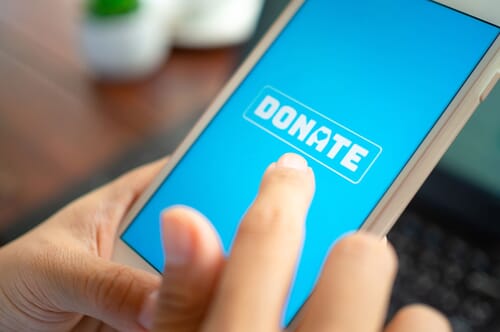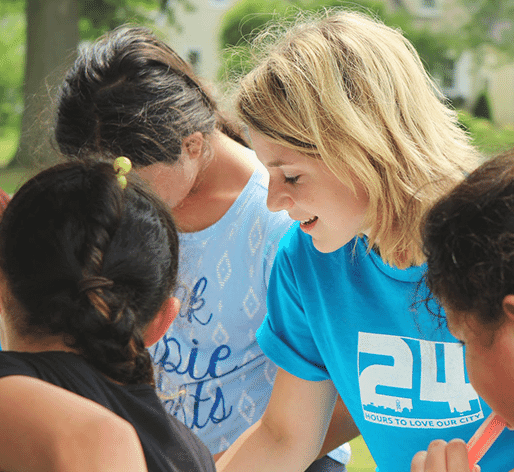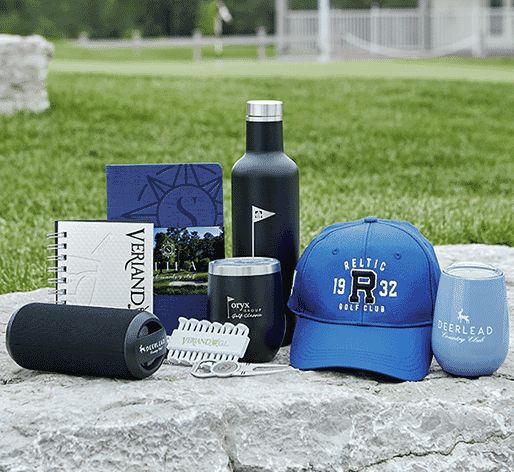Planning a Fundraiser: The Ultimate Fundraising Checklist

updated
August 1, 2025
On this page:
Fundraising Checklist
Congratulations, you have just been given your first assignment to lead a fundraising program for your school, business, or cause. Fundraising can be an extremely challenging and rewarding experience, but it takes planning. To ensure your success, you'll need to start planning as early as possible to make certain all your objectives are met. Below is a basic fundraiser checklist to help you pull things together.
Fundraising Checklist
 What are your goals? Make sure your goals are measurable when planning a fundraiser, such as raising a specific amount of money or signing up certain number of volunteers.
What are your goals? Make sure your goals are measurable when planning a fundraiser, such as raising a specific amount of money or signing up certain number of volunteers. After a goal has been defined, create your team. Your team should consist of people who can help achieve the goals of the fundraiser.
After a goal has been defined, create your team. Your team should consist of people who can help achieve the goals of the fundraiser.- Assign each person a specific area of responsibility, such as treasurer, secretary, setup/cleanup, promotions, social media, and any other roles you may require.
 Create a project timeline. Make sure to include each of the following elements in your timeline:
Create a project timeline. Make sure to include each of the following elements in your timeline:- A comprehensive list of details to help remember all the pieces.
- Team members’ names and contacts, by responsibility, so you can touch base with individuals between planning sessions.
- The projected, and actual, costs of various expenses. Tracking your budget, to stay on target, is extremely important.
- Expected completion date, and real date of completion, for each task. Keeping track of these dates will allow your team to better understand which projects worked, and which ended up being more of a challenge. This information will help future fundraisers to plan and improve training for all team members.
 Select a location for the event. Be sure to consider the following:
Select a location for the event. Be sure to consider the following:- Choosing a public place people will see as they are walking or driving by could encourage more participation.
- Does the location have all the amenities you need?
- Size
- Water hookups, if necessary
- Sufficient room for tables or games
- Restrooms
- A kitchen, if needed
- Storage for your event items
- How far in advance will you need to reserve the location/facility?
- Are there rules for using the facility that could be problematic for your event?
- Is there a fee to use the location?
- Can your sponsors advertise there?
 Options for promoting your event include:
Options for promoting your event include:- Flyers, pamphlets, and banners.
- Social media. Your group should have a page on Facebook and presences on Instagram, Twitter, and whatever platforms will work best for your group.
- Have your members invite their friends and family to like your pages to spread the word.
- Create Facebook events to make it easy to invite people, for interested supporters to remember the event, and to share information on time and place.
- Team up with area organizations and businesses and have them post your events for more free publicity.
- Public announcements at schools, churches, clubs, fairs, community sporting events, and other functions.
- Paid or donated advertisements in local publications and newspapers sponsored by schools, small newspapers, colleges, churches, civic organizations, etc.
- Community bulletin boards at local schools, newspapers, radio stations, public access television, etc...
- E-mail, letters, or phone calls to past contributors.
 If your fundraiser is focused on an event, be sure to show up early on the big day, and be ready for surprises, such as rain, locked doors, etc.
If your fundraiser is focused on an event, be sure to show up early on the big day, and be ready for surprises, such as rain, locked doors, etc. Begin researching custom imprinted promotional products. Use these to:
Begin researching custom imprinted promotional products. Use these to:- Offer items, such as screen-printed t-shirts, imprinted with your theme or campaign message, for sale as an additional way of soliciting more funds.
- Keep your group motivated throughout your fundraiser with incentive prizes and fun activities. Small giveaways can work wonders toward showing how much you appreciate your group.
- Reward your top fundraisers either for getting the most volunteers or money in donations.
- Give promotional items to volunteers, sponsors, and donors as a token of your appreciation. These gifts will not only express your gratitude, they will also get your name and message out there for everyone to see.
 On your event day, take tons of pictures and videos to post on social media for participants to enjoy. Social media is a great way to recruit future support by letting everyone see know how much fun it is to work with you, and how much good you do! If your fundraiser isn’t based on an event, post pictures of your creative promotional t-shirts or merchandise for sale, or any interviews with you from the local media. Whatever you do, post it. Pictures or it didn’t happen!
On your event day, take tons of pictures and videos to post on social media for participants to enjoy. Social media is a great way to recruit future support by letting everyone see know how much fun it is to work with you, and how much good you do! If your fundraiser isn’t based on an event, post pictures of your creative promotional t-shirts or merchandise for sale, or any interviews with you from the local media. Whatever you do, post it. Pictures or it didn’t happen!  Don’t forget about crowdfunding. Charities can make it easy to get donations with websites like GoFundMe and projects can be funded via Patreon, IndieGoGo, Kickstarter and more.
Don’t forget about crowdfunding. Charities can make it easy to get donations with websites like GoFundMe and projects can be funded via Patreon, IndieGoGo, Kickstarter and more.

Wrap Up Checklist. Did you:
 Count your donation totals, whether monetary or volunteers (depending on your goal).
Count your donation totals, whether monetary or volunteers (depending on your goal). Add up all your expenses.
Add up all your expenses. Calculate your total earned against what was spent.
Calculate your total earned against what was spent. Evaluate the people hours spent on the fundraiser against the amount of cash brought in.
Evaluate the people hours spent on the fundraiser against the amount of cash brought in. Review the process and identify areas for improvement for the next fundraiser.
Review the process and identify areas for improvement for the next fundraiser. Return any borrowed items used during the fundraiser (tables, chairs, music, etc.).
Return any borrowed items used during the fundraiser (tables, chairs, music, etc.). Thank your sponsors and suppliers.
Thank your sponsors and suppliers. Clean up any advertising banners or signs posted.
Clean up any advertising banners or signs posted. Have a small party to reward everyone who helped to pull the fundraiser together.
Have a small party to reward everyone who helped to pull the fundraiser together.

How to Sell Your Cause
An uncomplicated approach to successful fundraising might be to compare the process to the basic principles of selling. You need to capture donor attention (these are your customers), excite investment interest (sell the product), make a clear ask (close the deal) and say, “Thank you!” With this simple formula in mind, trust, inspiration and personal generosity become the fundraising equivalents to product quality, marketing and customer service necessary to make any financial endeavor succeed. From there, event development, written appeals and daily program operation can all become creative vehicles for delivery of your product: Donor happiness.
Passion
The first thing to remember when considering fundraising projects is that few donors will feel as deeply passionate about your cause as you do. Strange as it may sound, your convictions about the direct benefit donor dollars will provide to your cause will not attract donations all on its own. There are simply too many compelling needs to support in the world. Sustainability for your project will be better served by directing passion toward creating events and presentations that solicit universal experiences of joy that everyone can relate to. Then describe your request for sponsorship in terms of the joy and health your organization or project creates. This way, your potential donors will begin to relate more directly to what you are trying to achieve, and their financial gift will have more personal value.
Process
Successful fundraising is a year-round endeavor that includes three primary types of activity; community events (related in concept to trade shows), informative written appeals (primary marketing messages) and focused individual donor attention (sales lead cultivation). Be aware that even common business contact with your organization can encourage giving if daily interactions are consistently positive and friendly.
When planning events and writing appeals, put yourself in the donor’s (customer’s) shoes and design your activities based on what is of greatest interest to them. Golf, for instance may have nothing to do with your cause, but a well-planned golf tournament benefit will draw a wide range of participants, who in turn may take an interest in your cause. Letters sent out asking for regular contributions should be fresh each time, letting the donor know you have taken the time to think about what they need to hear to stay current with your cause. Your fundraising events should become known, enjoyable reflections of how your organization operates every day.
Planning
Fundraising is a daily discipline and timing is everything. Annual campaigns are expected by most donors in the fall, before or right after Thanksgiving. Springtime mailed appeals are also common. One primary event per year that both entertains and fully guides participants to contribute is key once your organization is fully established. Thank you notes and regular updates are essential. Each one of these projects takes full attention weeks, months and in some cases a whole year in advance. If your organization is small, start small. One way to stay on top of planning a fundraiser is to create calendar that projects deadline dates and outcomes and add the necessary activities to your day planner.
Paperwork
There are both State and Federal regulations that define the tax expectations around donated funds. Check with your Secretary of State and your State Board of Charitable Licensing to learn the technical details. Keep accurate records of every dollar accepted, including name, address, date, and payment type of each donor or sponsor organization. Be sure you document how raised funds are spent. Successful fundraising is based on trust and solid relationships. Your records are the gateway to establishing and maintaining long term public support for your work.



